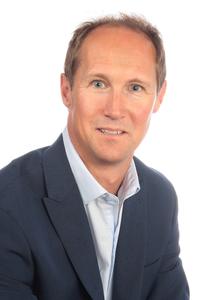CIO100 2018 #31-100: Shayne Tong, Auckland District Health Board

Shayne Tong joins the Auckland District Health Board (ADHB) as Chief of Intelligence and Informatics, reporting to the chief executive.
“This is a key strategic leadership role within ADHB and across the Northern Region DHBs, with the strategic aim to become a more regional integrated healthcare system,” says Tong, who had worked as CIO at Genesis Energy, and held senior IT positions at Fletcher Building in New Zealand as well as Barclays Group, Goldman Sachs and Deutsche Bank in the United Kingdom.
“I am accountable for strategic leadership and direction, driving IT service delivery excellence, driving digital health innovation, and maintaining influential relationships within ADHB senior leadership team, the Board and (sub) committees, the Northern Region DHB and health Alliance,” says Tong.
The key focus areas of the role are centered on Executive IS Leadership, Governance, Strategy, Stabilisation, Digital Health Innovation, and Health Intelligence and Advanced Analytics.
He has been involved in strategic planning and implementation of regional and national programmes with the other Northern Region District Health Boards, health Alliance and the Ministry of Health.
He also participates in the Northern Region Information Systems Strategic Planning (ISSP). This includes shaping and influencing the development of the ISSP through the ISSP Governance Group. They helped in the horizon planning for ISSP roadmap for the next 7-10 years in the Northern Region and the consolidated capital planning & prioritisation processes.
This is the first time the region has agreed and prioritised a combined ICT capital plan between the DHBs and healthAlliance, says Tong.
Clinical leadership is critical to transform the Northern Region model of care, he says. Thus, he says, they are working with their counterparts across the region about establishing a clinical leadership teams to shape and drive the long term investments in ISSP strategy.
We are also working with clinical leaders to assess how IS and digital technologies can create value and accelerate strategic outcomes.
“Being able to leverage new digital health technologies and public cloud platforms like Microsoft Azure and Amazon Web Services, is a game changer for the healthcare industry,” Tong says. We continue to invest in our Digital Enablement Team to design and deliver digital experiences that help us create more valuable engagements with our customers, patients and employees
Building strong partner relationships with local and global vendors is critical to the role, he says.
Tong is also working with the other DHBs and health Alliance on modernising and strengthening the core regional IS foundations, moving to Infrastructure and Telecommunications as a Service, Identity & Access Management, Enterprise Architecture, Integration Platform, IS Operations and Cybersecurity.
We are also modernising the Health Intelligence and Advanced Analytics capability at the ADHB, he says. The DHB is developing a cloud first strategy, has introduced Health Intelligence governance to agree on clinical priorities, and embedded agile including lean data sprints into new ways of working
Change is all about the people not the technology, and “you can't drive change without the commitment and passion of good people,” he says on a key lesson he has learned as a business technology leader who has worked across private and public sector agencies.
“It really is all about having good interpersonal skills; you have to able to build strong relationships and networks to influence the outcomes that are aligned to the strategic objectives you want to achieve.” And you need to invest time to build these genuine relationships says Tong.
Once you have that strong strategic alignment to a common purpose and shared direction, it is important that we set people and teams up for success by providing them with clear roles & responsibilities and the resources for them to execute on those objectives, he adds.
“You also need to use your key learnings in different ways of working to execute these objectives faster, particularly around agile ways of working, and to bring clinical and technology team’s closer together.”